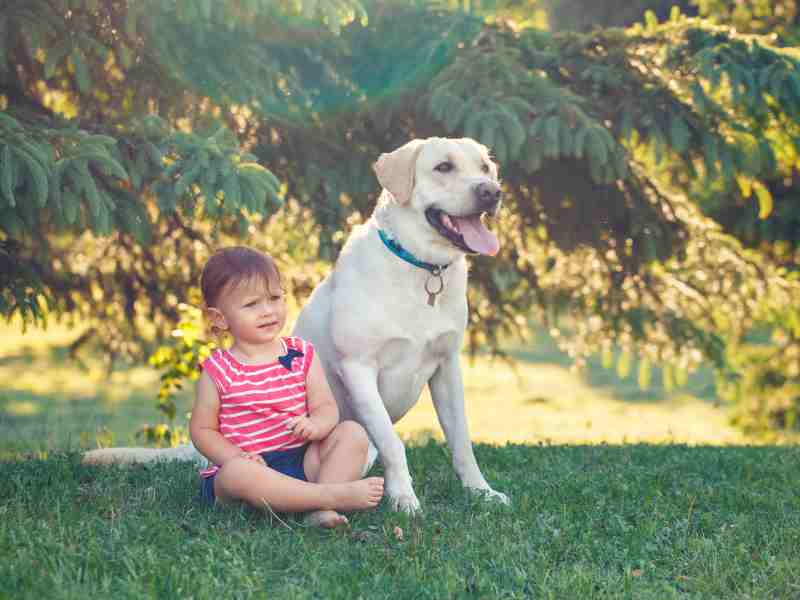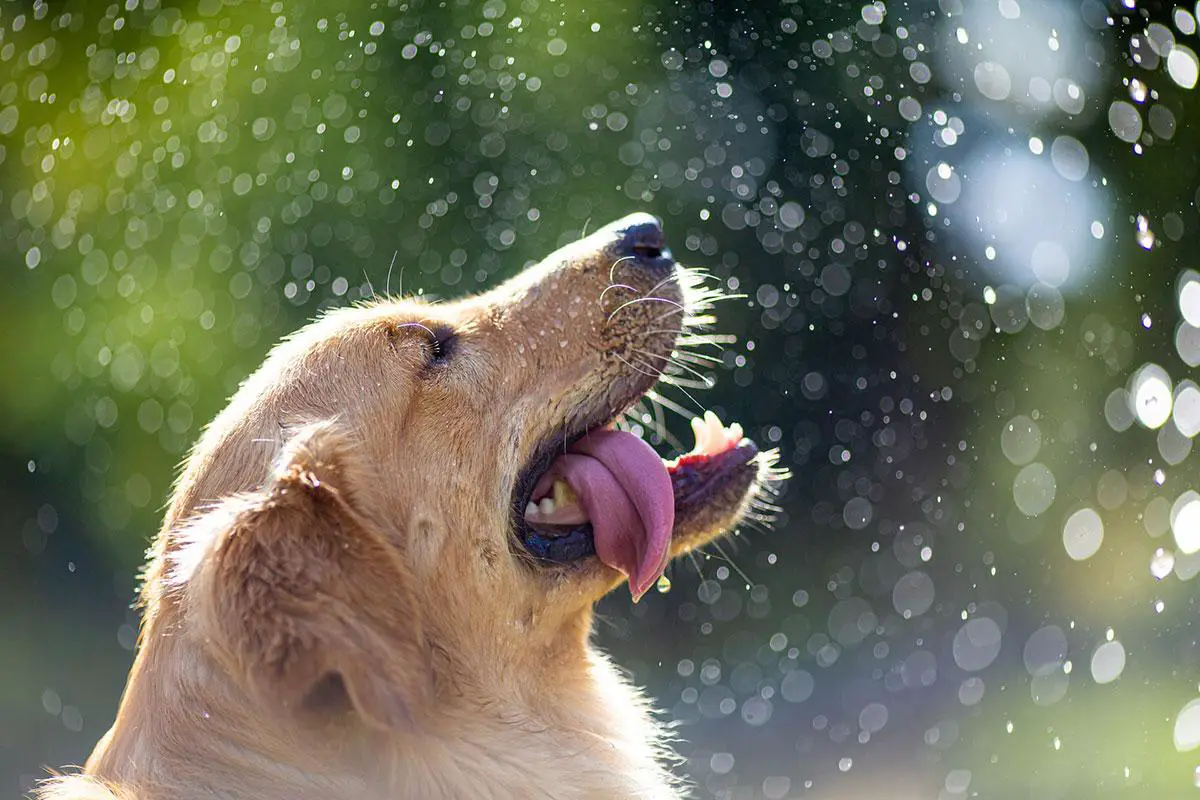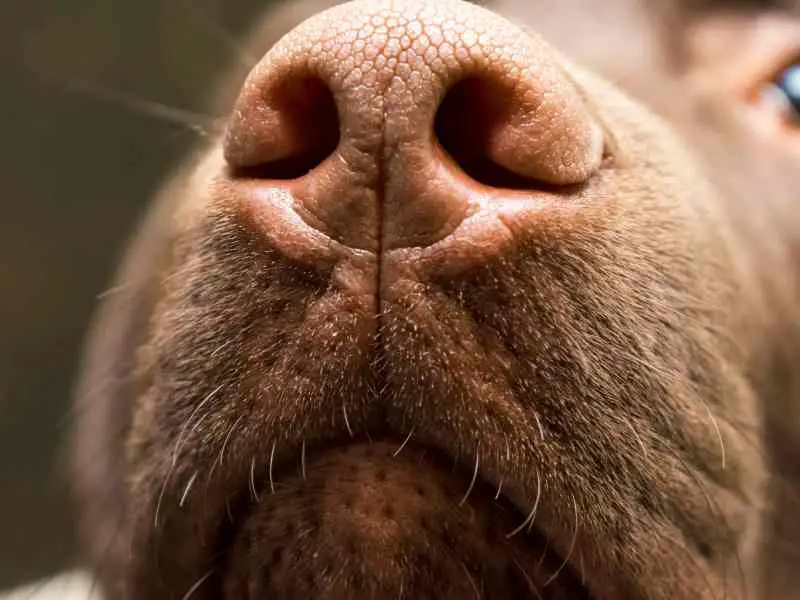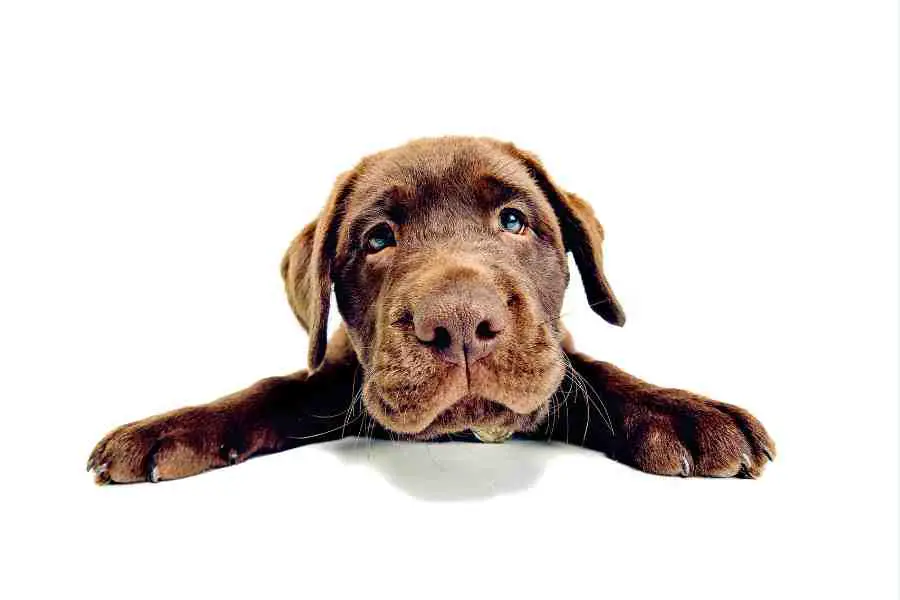Tickling a dog can be a fun and bonding experience for you and your furry friend.
Understanding the scratch reflex and identifying the ticklish spots on a dog’s body is crucial for a successful tickle session.
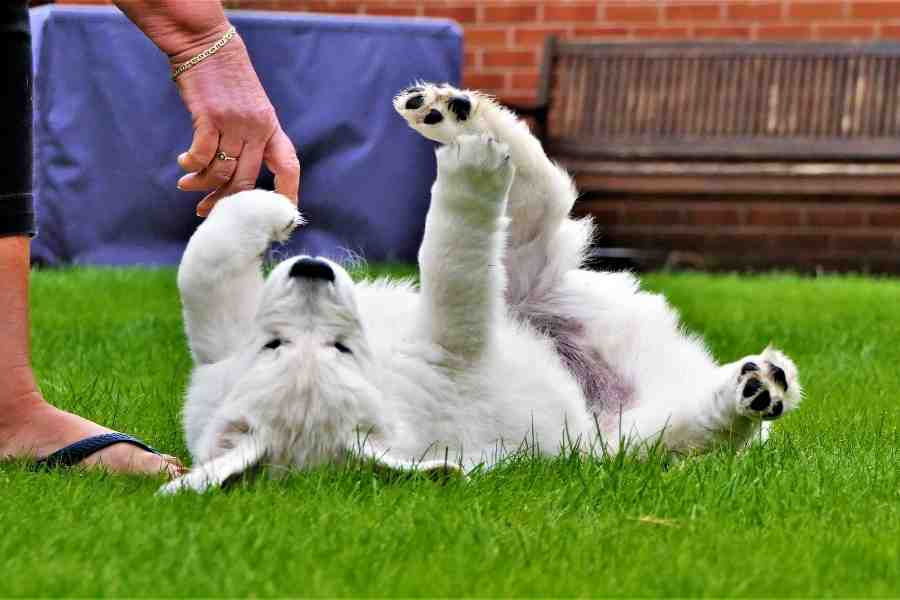
But how exactly do dogs react to tickling, and what are the best approaches?
Dogs have specific areas on their bodies that are more prone to ticklish reactions, such as belly rubs and hind leg tickles.
In this article, we will delve into the science behind tickling reactions in dogs, exploring the connection between nerve endings and tickle spots and understanding the involuntary movements and laughter dogs exhibit during tickling.
Additionally, we will provide tips for a successful tickle session, including how to avoid skin irritation and dry skin during tickling and recognize the signs of a happy reaction to tickling in dogs.
Understanding the Scratch Reflex
Understanding the Scratch Reflex
When you notice a dog’s hind leg thumping the ground as you hit their sweet spot, you’re witnessing the scratch reflex in action—an involuntary twitching movement sparked by nerve endings when a ticklish spot is stimulated.
This reflex involves nerve receptors under the skin that send immediate signals to the spinal cord, resulting in an instinctive kick.
The strength of the kick correlates with the scratching intensity, highlighting the connection between touch and reflex.
Initially, this mechanism evolved to safeguard animals from potential skin irritants, like insects or parasites, that could induce harm.
Thus, when you think your furry friend is enjoying belly rubs or light touches, it’s actually nerve receptors’ automatic responses at play.
In a clinical setting, veterinarians may evaluate the scratch reflex to gauge the health of a dog’s neurological functions.
By observing these involuntary reactions, vets can assess whether the dog’s nerve pathways and spinal cord responses operate as they should.
In summary, while a tickle session may seem fun, it’s rooted in a vital protective reflex that helps keep dogs safe from pests and skin irritation.
Key Points:
- Involuntary response to tickling
- Hind leg movement indicates functioning neural pathways
- Evolutionary protection against skin irritants
- Used by vets for health assessments
Identifying Ticklish Spots

Identifying Ticklish Spots in Dogs
Like humans, dogs have areas on their bodies that are more sensitive to touch due to a high density of nerve endings.
These ‘tickle spots’ can be found in various places, including behind the ears, under the chin, the base of the tail, the armpits, and between the front legs.
Observing your dog’s reactions when gently touching these areas can help you understand their preferences and no-go zones.
Some dogs may enjoy the sensation, while others might not appreciate being touched in certain spots, reacting negatively to the stimulation.
The belly, notorious for causing involuntary leg kicking when scratched, can be an intriguing spot to try. Still, pet owners should always perform a consent test to gauge their dog’s comfort.
Scratching gently and watching for reactions, you can determine whether your dog enjoys the interaction or is merely tolerating it.
| Ticklish Spot | Potential Reaction |
|---|---|
| Behind the ears | Head tilting, leaning into the touch |
| Under the chin | Mouth opening, tongue lolling out |
| Base of the tail | Shifting away, discomfort |
| Armpits | Lifting of the corresponding paw |
| Belly | Kicking, thumping leg |
| Between front legs | Rolling over, seeking more interaction |
Belly Rubs and Hind Leg Tickles
The experience of belly rubs and hind leg tickles for dogs can vary considerably.
While we might interpret a dog exposing its belly as a direct request for affection, it’s also possible that this is an appeasement gesture.
During a belly rub, dogs might reflexively kick their leg, which, although cute, isn’t a certain sign of enjoyment.
read.. impress your lab with something new
This action is an automatic response akin to what humans experience with light tickling.
To ascertain whether a dog relishes these belly rubs, look for a relaxed body posture, gentle eyes, and an open mouth.
Conversely, a quick cessation of the leg kicking or signs of discomfort may indicate it’s time to stop.
It’s vital to acquaint oneself with these signs to avoid any stress or anxiety, ensuring a joyful and safe play session.
Recognizing a Dog’s Sweet Spot for Tickling
The quest to discover a dog’s sweet spot for tickling can be a delightful bonding activity.
Pay close attention to your dog’s body language for signs of pleasure, such as a wagging tail, cuddling closer, or even a ‘smile.’
Those are your clues that you’ve hit the jackpot—their sweet spot! These areas can include the belly, neck, the pits of their front legs, and the spinal cord.
Every dog is different, so what elicits a happy reaction in one may be different in another.
The key is to adjust your technique and be sensitive to the individual responses of your furry friend.
Tickling should always be gentle and interactive, maintaining an attentive eye for signs of animation that indicate a love for the touch and the engagement shared between you and your dog.
The Science Behind Ticklish Reactions

Tickling a dog might seem like just playful interaction, but there is a fascinating science behind those involuntary reactions we observe.
When we find those ticklish spots on a dog — usually the neck, feet, belly, and back — we engage with areas with a high density of nerve endings.
These sensitive nerve endings send signals straight to the spinal cord.
This bypassing of the brain leads to those immediate, involuntary scratching or kicking behaviors, often called the scratch reflex.
In a clinical setting, these reactions are important. Veterinarians may deliberately invoke this scratch reflex to evaluate a dog’s reflexive capabilities and to assess for potential spinal damage or skin conditions, such as allergies, fleas, or dry skin irritations.
For our furry friends, the tickling sensation can also indicate their overall happiness and health.
A dog exhibiting an excessive ticklish reaction might be an alert to an underlying skin issue.
Exploring the connection between nerve endings and tickle spots
The nerve endings responsible for ticklish sensations in dogs are akin to human sensory receptors, reacting to light touches or strokes.
When stimulated, they initiate an involuntary response, including jerking, wiggling, panting, or kicking.
It’s the same kind of response from nerve receptors that makes us jerk our hand away from something hot before we even consciously register the heat.
The spinal cord is a significant hub for these nerve endings, particularly in the context of common tickle spots.
As a result, when these areas are subjected to tickling, whether with intent or during a check-up, the spinal cord processes these signals, leading to reflexive actions without needing to engage the brain.
Understanding involuntary movements and laughter in dogs
Dogs do not laugh in the conventional human sense.
read.. Labradors also have a lot of energy,
Their version of laughter isn’t accompanied by the sound of ‘ha ha’, nor do they experience gargalesis, the heavy tickling associated with uncontrollable laughter in humans.
Instead, dogs experience knismesis, a lighter form of tickling that causes involuntary movements but not laughter.
When dogs enjoy a tickle session, their version of ‘laughter’ might be observed through playful sounds and body movements, which could resemble what we perceive as panting mixed with a doggy grin.
Animal behaviorists have even discerned that dogs make a distinctive “huh huh” sound akin to laughter when playing or feeling joyful.
Recognizing the nuance between a dog’s panting and this ‘laughter’ sound is important in understanding their enjoyment.
Look for signs like a wagging tail, carefree body language, and the absence of stress indicators to gauge whether your dog is enjoying a tickle session truly.
Interpreting a dog’s response to tickling requires an understanding of their body language and emotional cues.
While we may not see fits of laughter, a dog’s reaction through involuntary movements during play, such as kicking their leg while getting their belly rubbed, indicates their reflexive response to tickling.
As with all interactions with animals, respect and attentiveness to their comfort and enjoyment should guide any tickle adventures you embark on with your furry friend.
Tips for a Successful Tickle Session

Engaging in a tickle session with your dog can be a delightful bonding experience when done with care and awareness of their preferences.
To achieve this, lightly scratch or wiggle your fingers across various parts of your dog’s body, such as the chest, sides, or rear of the back, and watch your dog’s reactions.
A useful rule of thumb is to start with a light touch and adapt your technique based on your dog’s response.
Keeping the sessions brief and respecting your dog’s mood is key—always be prepared to stop if they seem unwell, stressed, or not.
Remember that while tickling should be fun, heavy tickling might irritate your dog’s skin. Be sensitive to their needs by ensuring your touch is gentle and soothing rather than vigorous.
Skin irritation can be an issue, particularly with dogs with sensitive skin or conditions such as dry skin.
When you tickle your dog, aim for a harmonious interaction where their well-being is your top priority.
read.. what do labs love the most
Avoiding Skin Irritation and Dry Skin During Tickling
To ensure that tickling is a joy rather than a nuisance for your furry friend, it’s essential to be mindful of their skin’s condition and sensitivity.
Dogs with signs of dry skin, including redness, flakiness, or scaliness, should be handled with extra care.
Rough tickling on dry or sensitive areas might exacerbate the issue, so it’s best to consult a veterinarian for advice on managing your dog’s skin health.
Moreover, it’s necessary to distinguish between a ticklish sensation and an urge to scratch an itch.
A dog seeking relief through scratching might be signaling discomfort rather than indulging in the pleasures of tickling.
To nurture your bond and foster a satisfying petting session, focus on caressing areas where your dog seems most comfortable.
Watch for stress signals—like yawning or showing the whites of their eyes—and give them space if needed to avoid any unwelcome skin irritation.
Recognizing the Signs of a Happy Reaction to Tickling in Dogs
A joyful tickling session is usually marked by unmistakable signs in your dog’s demeanor. These happy reactions include a soft, relaxed face, a charming doggy smile, and a wagging tail held high—an unmistakable demonstration of their contentment.
Dogs that lean into the hand that tickles them express active pleasure and appreciation for the sensation.
Be attentive, however, to indicators that your dog might not be as thrilled with the tickling. Displeasure can be communicated through actions like walking away, ears pinned back, or a tail wagging low or stiffly.
A dog who merely tolerates tickling might also show signs of grumpiness or anxiety, prompting you to respect their physical boundaries.
Sometimes a dog’s lack of enthusiasm for tickling can be rooted in physical discomfort, with sensitive areas including ears, feet, or belly being particularly problematic.
If your dog consistently shies away from tickling, this could be a cue to schedule a check-up with your vet to rule out any possible health concerns causing discomfort.
FAQ
Q: How do you know if your dog wants to be tickled?
A: A good way to tell is by watching their body language. If they seem like they want it, then go for it! Lightly touch them and see how they react. If they seem uncomfortable or bored, though, stop what you’re doing immediately and try again later!
Q: Do all dogs enjoy being tickled?
A: Some dogs love getting tickled and become very excited when it’s time to play that game. However, not all dogs really enjoy it- some just tolerate it because of the attention they get from you as a reward after they’ve been playing.
Q: How do you know if your dog has had enough and doesn’t want to play?
A: If they’re starting to get upset or stressed out, then it’s time for the game to end. Even if your pup was having fun before, moods could change quickly, and it’s important not to force them into anything!
Q: Should I try petting instead if my dog doesn’t like being tickled?
A: It might be a good idea to try something else, such as petting them or snuggling with them. Labs might enjoy that more than getting tickled by you!
Q: What is the right way of tickling a dog for it to be enjoyed by both parties?
A: Touching them lightly is an excellent way to get them into the game. Make sure to softly pet or tickle with your fingertips, using one hand for each paw, so you don’t overwhelm them with touch. It’s also important to stop when they’re not having fun anymore.
Q: Can dogs have too much fun being tickled?
A- Yes, dogs can have too much fun! They might get very enthusiastic and overexcited with all of that attention. While some dogs enjoy this kind of stimulation, unfortunately, not all are the same. It’s important to know when they’ve had enough and when it becomes a bit stressful for them!
Q: What are some risks associated with tickling dogs?
A: Some risks associated with being too rough are that the dog might get stressed out. Additionally, it could potentially cause them to become more uncomfortable around you in general. If this is something you’re interested in doing, make sure to follow these tips and tricks for great results!

